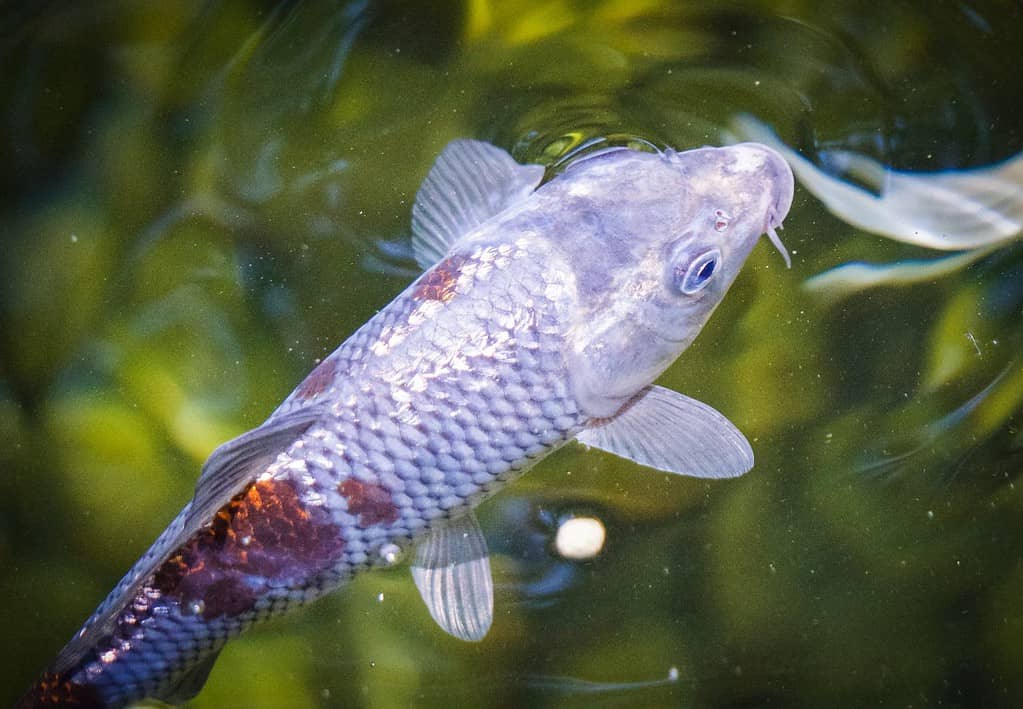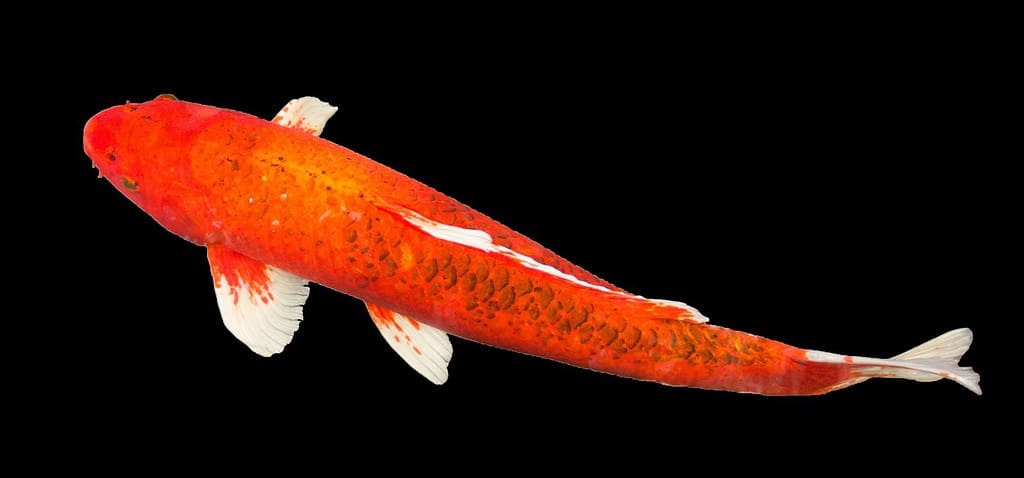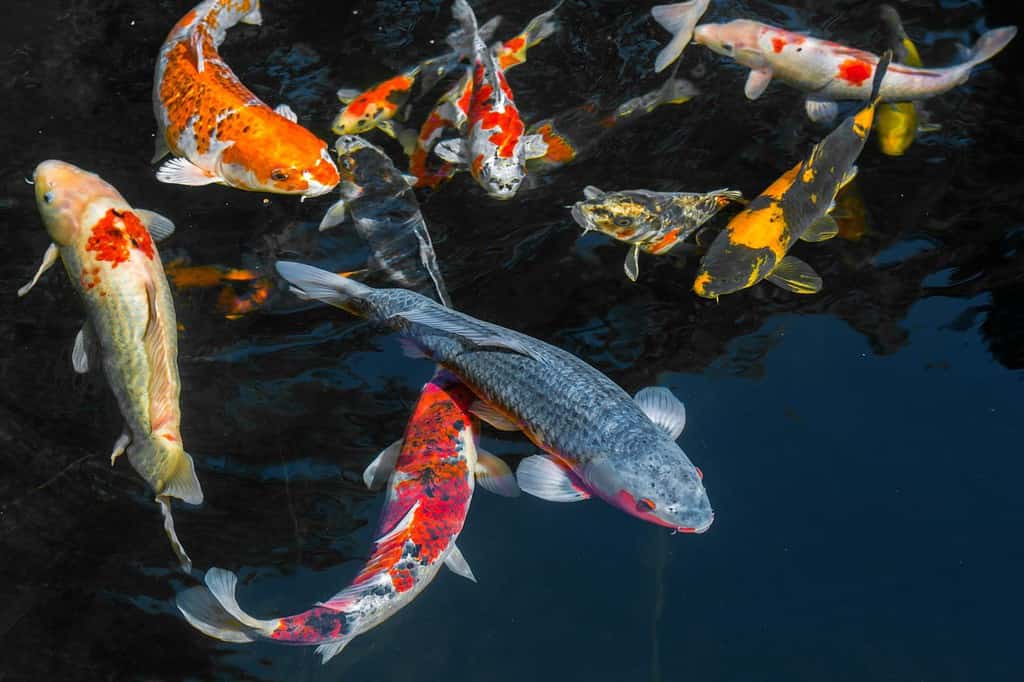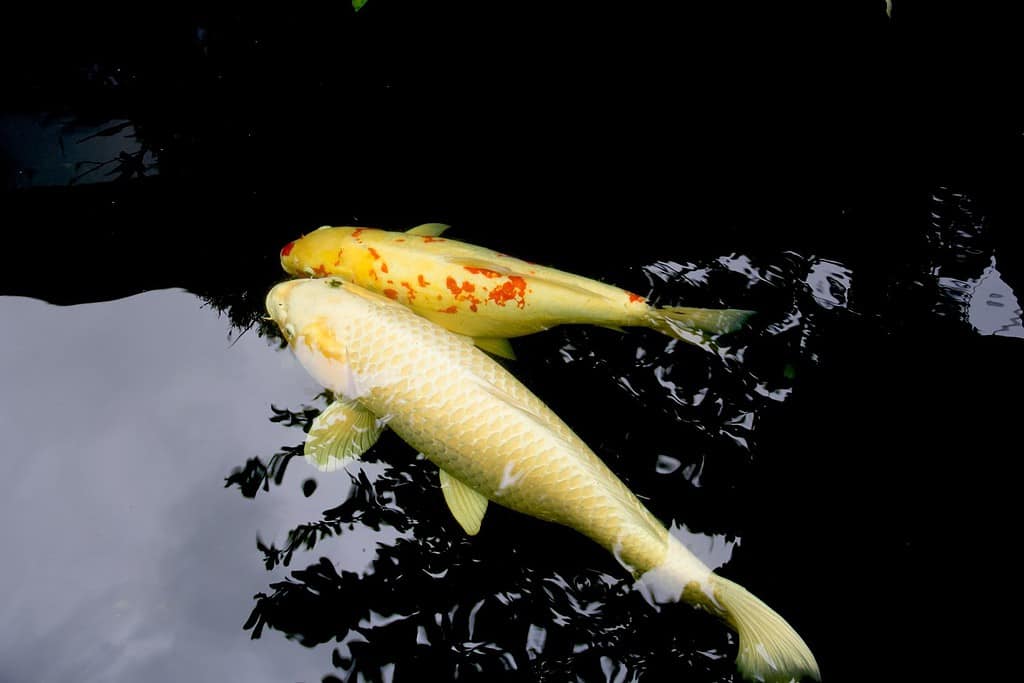Koi is the informal name for Nishikigoi meaning “swimming jewel” in Japanese. Asian cultures commonly keep koi in outdoor ponds as they symbolize longevity and prosperity. Meticulously bred and collected to produce beautiful specimens, they may sell for thousands of dollars. A koi’s lifespan is between 50 to 100 years on average. Indeed, some live to be over two hundred years old. Therefore, this is a long-term commitment and one that undoubtedly reaps many rewards. However, you can choose from some of the cheapest koi to keep as pets, especially if new at koi keeping.
With currently over a hundred koi varieties, breeders continue to create new ones. Generally, domestic koi will average between 12-15 inches. However, Japanese koi average 22-26 inches, and jumbo koi average 34-36 inches. It takes about two to three years to reach full length. Granted, these are large fish; therefore, they require sufficient space as they mature.
Some factors that affect the price of koi include:
- Size: small koi start at $8; larger koi are more expensive
- Color/Pattern: symmetry and color affect value
- Age/Sex: mature females are more valuable
- Lineage: sought-after lineage gets expensive
- Origin: imported koi are more expensive than domestic
- Quantity: buying in bulk lowers the cost
For the beginner, or those disinterested in breeding koi, choosing less expensive varieties enables one to create a beautiful pond at an affordable price. They are available for purchase at local pet stores. Lastly, read on to find all about the 7 cheapest koi to keep as pets.
Kohaku koi

One of the oldest and most popular varieties, Kohaku’s bright white body is patterned with red.
©Jerawat Supajirakit/Shutterstock.com
One of the oldest and most popular varieties of koi has a bright white body patterned with red. Of the two varieties, one has a red pattern covering its entire body, and the other, known as Tancho Kohaku, has only a red spot on its forehead. This latter one is highly prized and a rarity because it resembles the Japanese flag! In addition, variations include Maruten Kohaku, Gin Rin Kohaku, and Doitsu Kohaku. Costs vary widely and start at less than a hundred, increasing to hundreds of thousands.
Ginrin

This koi is characterized by its iridescent diamond-shaped scales that glisten in the sunlight.
©Stephanie Kenner/Shutterstock.com
Ginrin translates to mean “golden silver reflective scales.” Considered a high-quality but common koi, this variety originated in Germany. Their iridescent diamond-shaped scales glisten in the sunlight. Available in a variety of patterns and colors, the most common is a yellowish-gold body with orange splotches. Their golden color occurs when scales cover red coloration or appear silver when they cover white or black coloration.
Characteristics of the Ginrin are scales that begin at the base of the head or shoulder and extend to the base of the tail and sides of the dorsal fin. The most common variety is the Diamond or Hiroshima GinRin, which resembles crackled glass or brushed aluminum. The least common is the Pearl GinRin with a sparkling deposit in the center of each scale appearing like a pearl. Beta Gin resembles a mirror with sparkling scales. They are uncommon and expensive. The Kado-Gin has a sparkling deposit on the outer scale edge. Lastly, they measure between 12 to 36 inches and cost, on average, between $150 to $400.
Taisho Sanke

Emperor Taisho reigned when Taisho Sanke was first bred from the Kohaku koi.
©Reimar/Shutterstock.com
Taisho Sanke’s full name is Taisho Sanshoku Koi. The name comes from Emperor Taisho, the reigning emperor at the time these koi were first bred from the Kohaku koi. San translates to means three, and Shoku means colors. Called Sanke, for short, they have a solid white base with overlaying colors in black and red. Its 10 subvarieties include:
- Aka Sanke
- Tsubo Sumi
- Nidan
- Sandan
- Yondan
- Doitsu
- Tancho
- Kuchibeni
- Menkaburi
- Maruten
Lastly, they typically cost, on average, between $50 to $300 and grow to between 24 and 36 inches.
Doitsu

In 1908, Kichigoro Akiyama crossed a scaleless food carp with a Japanese-scaled koi, creating the Shusui koi.
©noypb/Shutterstock.com
This beautifully unique species is scaleless; however, some have a few scales. Developed nearly 100 years ago, they originally came from Germany. The word “doitsu” comes from the word “Deutsche” meaning German. A teacher from Tokyo Fisheries College, Kichigoro Akiyama, crossed a scaleless food carp with a Japanese-scaled koi to create the Shusui variety in 1908. Shusui is another name for Doitsu, meaning “autumn water.” Their pattern of red on a blue body resembles fallen leaves in a river. Today, there are many varieties of Doitsu. Some things to look for in this species are their scales, if any exist, which should line up along the lateral and dorsal lines of the body. Lastly, they cost around $500.
Aka Matsuba

Aka Matsuda should be a deep, dark red with consistent color and no missing scales.
©noypb/Shutterstock.com
This single-colored sub-variety has a black net-like pattern. The term “Matsubagoi” refers to reticulated single-colored koi; Matsuda is the shortened version of this. Aka Matsuba, created from the Asagi variety, is completely red. It should be a consistently deep, dark red with no missing scales, indeed the deeper the color the more valuable they are. The fins, tail, and head should also be red. Additionally, other varieties include Gin Matsuba with a white base color and Ki Matsuba with a yellow base color. They cost, on average, between $100 to $200.
Asagi

This blue-scaled koi has nonmetallic reticulated diamond-like scale patterns, and splotches of red on the tail, belly, and gill plates.
©Mirko Graul/Shutterstock.com
One of the oldest breeds of koi, this blue-scaled version has nonmetallic reticulated diamond-like scale patterns and splotches of red on its tail, belly, and gill plates. Sometimes, red coloration appears on the dorsal fin and in the eyes, which is desirable. The red color is more rusty in hue and sometimes spreads as it matures. A flawless Asagi will have a white head; however, most are grey. Those with more red coloration are known as Hi Asagi Koi. The Taki Asagi variation has an additional line of white scales between the red and blue coloration. Those with red heads are known as Menkaburi Asagi. Ideally, Asagi have blue scales with a lighter blue near the base, giving them an ombre look that covers their bodies. Gin Rin Asagi is another variation. Finally, they average between $450 to over $1,000.
Platinum Ogon

This single-colored subvariety has metallic skin and comes in a variety of hues.
©noypb/Shutterstock.com
This single-colored subvariety has metallic skin and comes in a variety of hues. Ogon translates to mean “gold” in Japanese. Purachina Ogon or Platinum Ogon first appeared in 1963, but Sawata Aoki first bred them in the 40s. He crossed a light-yellow color Kigoi with a dark grey metallic Nezu Ogon. Eventually, over years of breeding the silvery Platinum Ogon came to be. Other colors of the ogon are cream and yellow. Ranging in size from 20 to 25 inches; indeed, some have exceeded 30 inches. Their average lifespan is 30 years, but some have been reported to live to over 40. In addition, variations include Gin Rin Platinum Ogon and Doitsu Platinum Ogon. Lastly, their average price ranges from $35 to $1,000.
The photo featured at the top of this post is © paulacobleigh/ via Getty Images
Thank you for reading! Have some feedback for us? Contact the AZ Animals editorial team.






